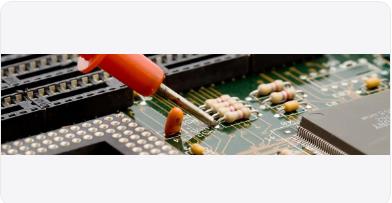Many people don't realize that the electronic products, equipment, and objects they own are built on several internal components that work together to provide the necessary functions and features they use. For example, a mobile phone is more than just the case, buttons, and display that you see on the outside. There are several parts inside the equipment to accommodate and connect the necessary components. One of the core components is called a printed circuit board or PCB for short.
How to choose a PCB assembly company, a 7-step process is easy to solve
Printed circuit boards are the basis of most electronic products. At the end of 2018 alone, global PCB product sales are expected to reach US$82 billion. This should give you an idea of how often the PCB is used in manufacturing.

Without them, many devices will stop functioning altogether. If a major malfunction or malfunction occurs, it may cause some very serious problems. The circuit board is not invulnerable. Over time, they will experience a lot of wear, which reduces their performance and functionality. Factors such as weather, humidity, age and even altitude will affect the condition of the circuit board.
Fortunately, the circuit board can be repaired or remanufactured to give it a new look. This will do one of two things. The circuit board in question can be returned to its original equipment to make it run again. Or, if you want, it can be used in a completely different device as a form of recycling.
Of course, before repairing or repairing any circuit board, engineers first need to identify and understand why it failed. If you don’t know what’s wrong, you can’t solve the problem well, right?
Knowing and identifying some of the most common problems related to PCBs is very beneficial, so if the device does fail, you at least know what went wrong. We will study some of the most common printed circuit board problems and explore ways to solve these problems.
In order to better measure, let us explore what a printed circuit board actually is and what it doesDIP plug-in line and wave soldering
What is a printed circuit board?
Printed circuit boards or PCBs are the core components of almost all electronic devices. Except for the simplest electronic products, everything uses some kind of board to connect and mechanically synchronize all the elements of the product. For example, there may be a small PCB inside the coffee machine to connect the electronic control system, heater element, and display.
In the early days-before the advent of design software-printed circuit boards were planned through manual development using polyester film, and were usually four times larger than the circuit board itself. The designer will lay out the pin pads, traces and components in the proposed design, which is a bit like a storyboard to test and explain the circuit. Today, all of this is done through design and manufacturing software.
The PCB is mechanically necessary to support and connect all the components in the device. These components are synchronized using conductive tracks-this allows current to flow freely through the circuit board and from one component to another.
PCB components are soldered to the circuit board, and they are fixed to the entire circuit through electrical and mechanical means. These "components" include batteries, resistors, LEDs, transistors, capacitors, etc.
Boards are usually produced in layers, including various levels of conductive and non-conductive boards. They can be single-sided single copper layer, double-sided double copper layer, both sides of the substrate layer, or multiple layers of copper and different layers of the substrate. It is worth mentioning that multi-layer boards provide multiple benefits, such as increased component density, but they are more difficult to analyze, repair, and modify.